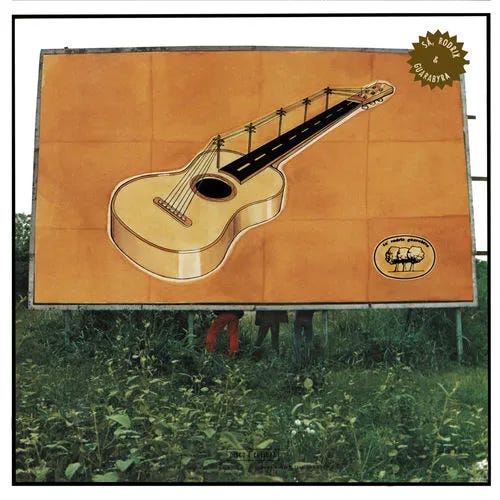EVERY GENRE PROJECT - April 18 - Rock rural
Genre of the Day - Rock rural
Album of the Day - Terra by Sá, Rodrix, and Guarabyra (1973)
April 18, 2024
The way my parents talk about Crosby, Stills, and Nash, you’d think they were actually prophets. I’m sure their music is indeed divine. I just haven’t listened to enough of it to confirm nor deny. Somewhere in Brazil, there’s certainly a pair of parents extolling their son of the greatness of the trio Sá, Rodrix, and Guarabyra. Maybe that son listened to a Crosby, Stills, and Nash album today for a blog called “Cada Gênero Projeto.” My imaginative mind would like to think so. Perhaps I’ll don my Brazil shirt soon in honor of this mythic parallel.
This is all to say that today’s genre seems to rest largely on the contributions of a single artist. To illustrate this, when you click on the “rock rural” page on Portuguese Wikipedia, such a page doesn’t actually exist. It simply redirects to a link to Sá and Guarabyra—Rodrix was apparently only part of the group for its first two years. Somehow, Portuguese Wikipedia editors have not clocked that there exists a page for the duo and a separate page for the trio. You have to jump through a lot of hoops to find the origins of rock rural.
Rock rural probes the nature of the rural/urban socio-cultural divide that exists in several countries. Throughout the 20th century as notions of cosmopolitanism became entrenched in many nations, many people from urban centers began to look down on their rural counterparts once exalted for their hardworkingness. In the US, we have a fair amount of pejorative terms in circulation to describe ‘rural people’: hillbillies, country bumpkins, rednecks. I’ve also observed that this causes a lot of unfair derision among urban Americans towards rural-derived genres of music, as they generalize genres like country into an uneducated monolith. In Brazil, it’s a similar dynamic: the rural sphere is simply not seen as cool or forward-thinking. Rock rural challenged that idea by positioning rural Brazil as a poetic, rocking place, interpolating the instrumentation of American rock and country groups and pairing it with elements of Brazilian pop and the traditional acoustic guitar of sertanejo, the forebearer of all Brazilian rural music.
While they take considerable musical cues from Crosby, Stills, and Nash and adjacent American folk-rock artists, calling them the exact Brazilian equivalent is a bit of a misnomer because these songs don’t necessarily center the glorious unity of vocal harmony as much as they do whimsical, folksy lyrics. There’s perhaps the only popular music rumination on one of the most odd Biblical stories—Jonah and the whale (“Mestre Jonas”). Other songs emphasize the rural aspect more literally as on “O pó da estrada” (The dust of the road) which brings in local instrumentation with a feathery flute. These songs are zippy and catchy, which probably carried heavy weight in making the countryside seem lighter and more energetic. Perhaps Brazilian countryside resident Lenny Kravitz will carry on the torch of this trio and bring in some rock rural going forward.




